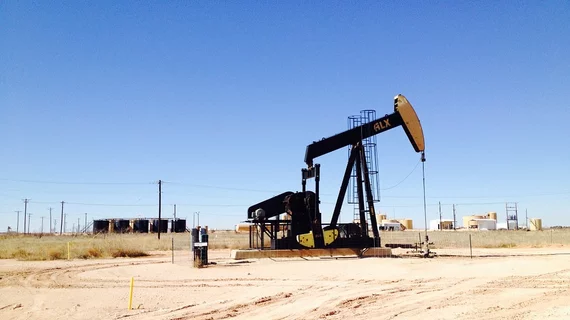Unconventional natural gas development (UNGD), commonly known as “fracking,” puts heart failure (HF) patients in the surrounding area at an increased risk of hospitalization, according to new research out of Johns Hopkins University.
The study, published in the Journal of the American College of Cardiology, included more than 9,000 HF patients and more than 5,000 HF hospitalizations from a part of Pennsylvania where UNGD was actively taking place. All patients who were treated for HF received care from January 2008 to July 2015. Outcomes were assessed using electronic health record data.
The team broke the UNGD process down into four phases: pad preparation, drilling, stimulation and production. Three of those phases—pad preparation, stimulation and production—were associated with increasing a patient’s risk of being hospitalized for HF.
Fracking was linked to an especially high risk of hospitalization for HF among patients with heart failure with preserved ejection fraction (HFpEF) or heart failure with reduced ejection fraction (HFrEF).
“These associations are plausible given environmental (e.g., air pollution, water contamination, noise, traffic) and community impacts of UNGD,” wrote first author Tara P. McAlexander, PhD, Johns Hopkins Bloomberg School of Public Health, and colleagues. “Understanding how people living with HF are susceptible to environmental exposures is especially important given the growing prevalence of HF and the possibility that environmental factors play a role in clinical heart failure outcomes.”
An editorial accompanied the study, and its authors praised the research team’s “extensive and rigorous methods.” They also noted that there is still much to be done as specialists hope to learn more and more about this crucial issue.
“Moving forward, we need to better understand the mediating effects by air and water pollutants, as well as particle radioactivity, and the existence of racial disparities in the fracking impacts,” wrote co-authors Barrak Alahmad, MBChB, MPH, of the Harvard T.H. Chan School of Public Health, and Haitham Khraishah, MD, of Harvard Medical School. “We also need a better understanding of the effects of various environmental exposures on cardiovascular health. Fine-tuning of cause-specific cardiovascular morbidity and mortality along with translational studies are needed to further characterize the pathophysiological pathways.”

